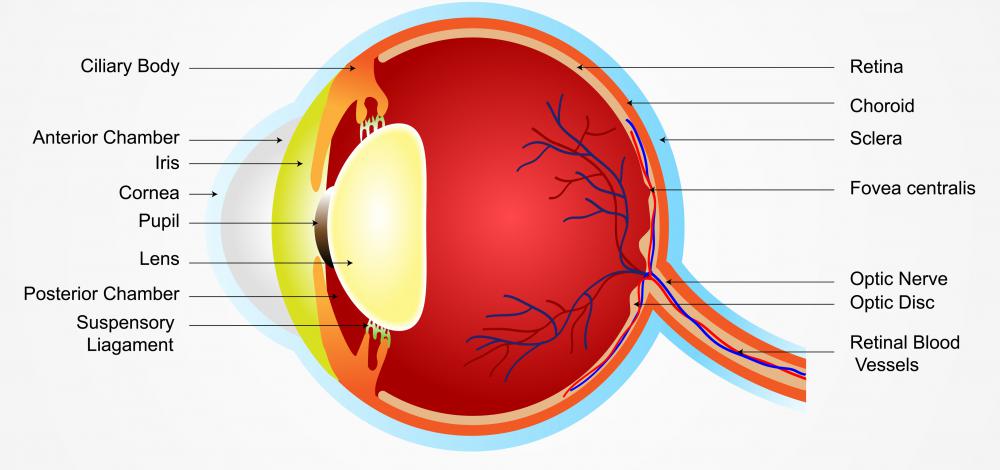At WiseGEEK, we're committed to delivering accurate, trustworthy information. Our expert-authored content is rigorously fact-checked and sourced from credible authorities. Discover how we uphold the highest standards in providing you with reliable knowledge.
What is Retrolental Fibroplasia?
Retrolental fibroplasia, also known as retinopathy of prematurity (ROP), is a rare disease in which blood vessels grow abnormally behind the retina. In severe cases, this progresses to scar tissue which can lead to problems with the eye. This condition occurs in premature infants and has been linked to the high concentrations of oxygen used to support their underdeveloped lungs.
In a fetus, blood vessels begin to form in the eye three months after conception, and are complete by birth. Prematurity disrupts this development, often causing retinal vascular proliferation. Severe retrolental fibroplasia is marked by this rapid growth as well as by severe scarring, and at times, retinal detachment. This can lead to blindness, reduction of vision and other problems with the eye.

Which premature babies are at most risk for developing this condition? The risk is proportional to how premature the baby is, meaning the earlier they are born, the higher the chance of developing the disease. Also, smaller preemies, regardless of gestational age, are at higher risk. Because retrolental fibroplasia is such a serious disease, most if not all babies born before 34 weeks of gestational age, three weeks short of full term, are screened by an ophthalmologist.

What are the symptoms of retrolental fibroplasia? Unfortunately, most signs of the disease are not noticeable to the untrained eye. The symptoms include white pupils (leukocoria), abnormal eye movement (nystagmus), severe nearsightedness (myopia) and crossed eyes (strabismus). It is imperative to recovery that this disease is diagnosed and treated early, before severe scarring has developed and the retina has detached.

Treatments for this condition include cryotherapy or freezing therapy, surgery to reattach the retina, laser treatment and low vision support. Laser therapy is used more often than cryotherapy, but must be used before serious scarring and retinal detachment occur. There have been studies conducted on premature infants using oral vitamin E that showed a reduction in the incidence of retrolental fibroplasia. Most of the time, abnormal growth of the blood vessels becomes normal on its own, but approximately 10% of affected infants will continue to experience abnormal growth and progress to severe retrolental fibroplasia.

There is little that can be done to prevent retrolental fibroplasia besides avoiding premature birth. Early diagnosis and treatment are key in avoiding major damage to the eye. As neonatal intensive care units are becoming more cutting edge, doctors can more effectively monitor the level of oxygen delivered to preemies, thereby reducing the potential for the disease to develop.
AS FEATURED ON:
AS FEATURED ON:
















Discussion Comments
In the movie "Butterflies are Free" with Goldie Hawn and Edward Albert, he went blind because of a lack of nitrogen mix. I was a 1955 baby who was eight weeks premature and my eyesight is 400/400. And now at 59, I have a rare type of cataract in my right eye.
If your baby was on a vent then on oxygen for a extended period of time and now has heavy duty prescription glasses, would they be considered a viable candidate for laser surgery and would it be covered by OHIP? thank you
Can this retrolental fibroplasia be peeled during retinal detachment surgery and if so is this considered a membrane peel?
Is there an effect of high oxygen concentration in the blood with regards to adult?
Post your comments